The South Florida Mango Report
Hurricane Irma
Last year (2017) we had a major hurricane event (Irma) so the entire South Florida ecology got a substantial haircut. Trees were down all over the place, major limbs were broken and many trees were drastically trimmed back. Afterwards the normal result from Nature is that all plants go into hyper-vegetative growth for a year or more. When trees are growing vegetatively they tend not to bloom and fruit.
And we all know No Bloom = No Fruit!
This Mango tree (variety Glenn) was cut all the way back to the trunk.
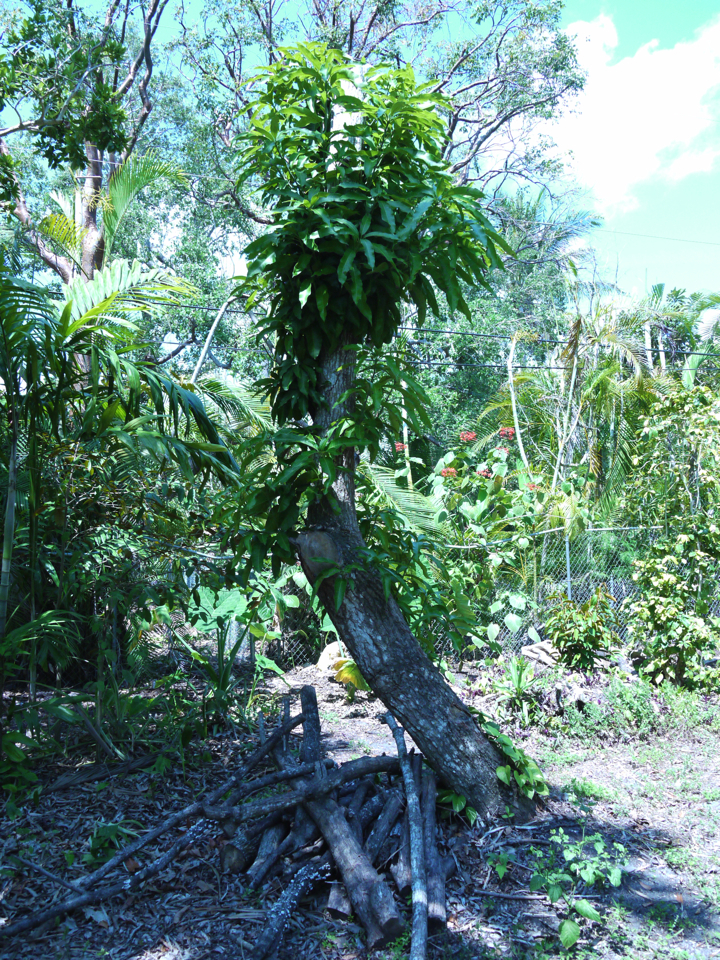
It will not produce fruit for a year or more to fully recover.
Note that it already had a serious 30 degree tilt from a hurricane of the past.
This Bombay mango (a Jamaican variety of Indian descent) was "hat racked" after Irma.
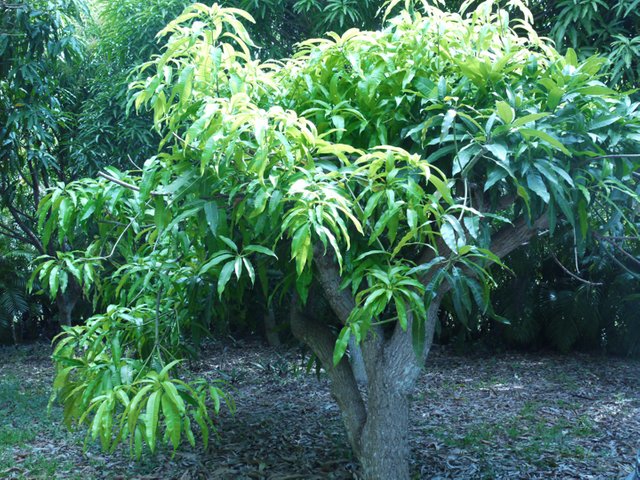
It will have a nice compact, rounded form in the future.
Yes, we "hat racked it" ourselves to have sharp, clean wound surfaces instead of the twisted, sheared and smashed limbs from the fury of Hurricane Irma. There was enough shade and no need to paint the blunt ends in this case.
So I had not been expecting much of a mango crop this year. We had very light bloom from December to February and usually March is the last chance for flowering. However here we are in mid April and we are getting another bloom cycle. I don’t remember ever seeing so much mango flowering so late in the year.
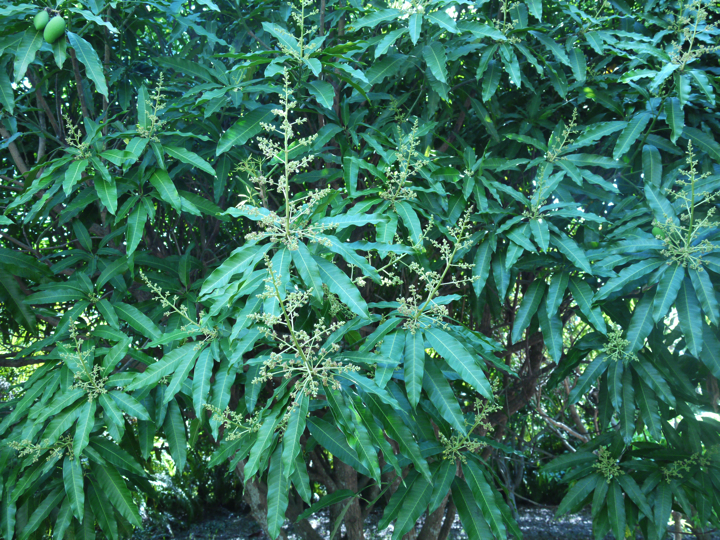
Cold and drought are two of the main catalysts to mango flowering. It was a mild winter for the extreme South but it has been very dry for the last six to eight weeks. So in spite of the fact that many trees are going to take a year or two off to recover, many of the established trees are going to give a fine crop after all.
You can see fruit from the December or January bloom and now another late season round of blossoming.
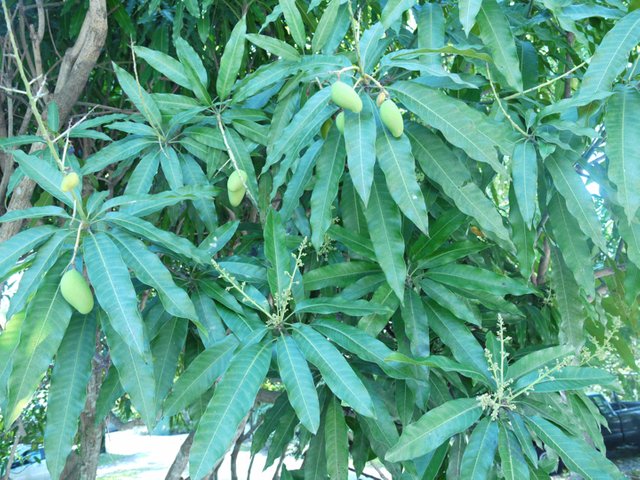
Nice fruit set visible on this racime of Beverly, a large, colorful, late-season variety.
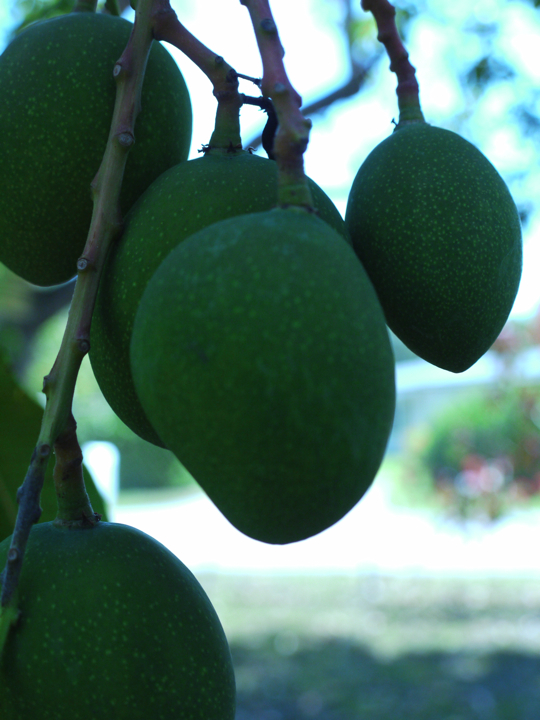
Burmese variety Po-Pyu-Kalay is in on the re-blooming action.
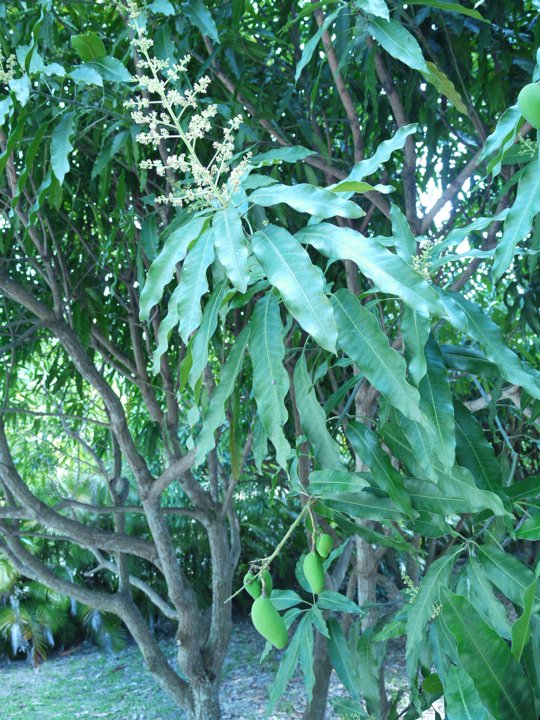
PPK is marketed in Florida as "Lemon Meringue" It was introduced to the USA by Rare Fruit Grafting Master Maurice Kong and propagated wholesale by the Zill Nursery, now in the Palm Beach area.
There's always much ado about Mango Drop.
There are little aborted mango nubbins lying on the ground all over the grove.
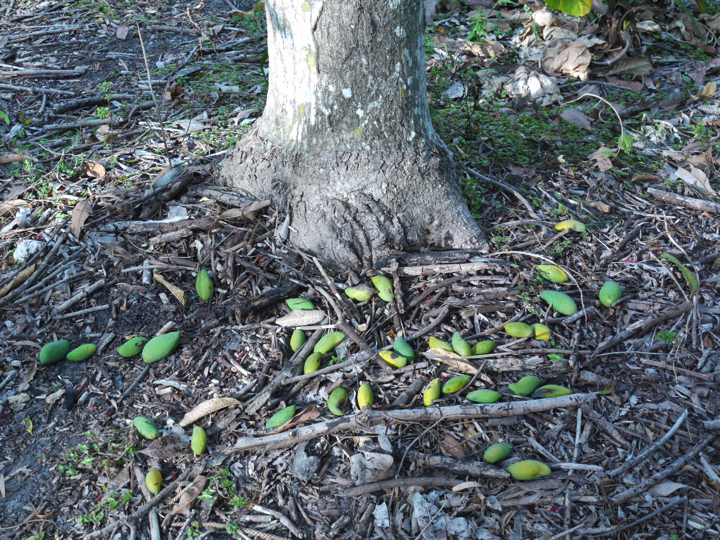
As it so often happens to people, my long term interest in tropical fruit led to my eventually working in the industry at Pine Island Nursery (http://tropicalfruitnursery.com) south of Miami in the Redlands. Every year around springtime I would get these desperate phone calls: "All my mangoes are falling off the trees!"
"Well, it sounds to me like catastrophic mango drop." "Oh no, what is that? Is it related to Catastrophic, Anthropogenic Global Warming?" "Oh no, it's nothing like that, it just means that a percentage of mangoes always fall off the trees at every stage of development." "What percentage?" "Oh maybe 30, 40, 50% from the number that originally set, out of the hundreds and thousands of flowers in every flower spike, the tree couldn't possibly even begin to sustain all that fruit." "You mean it's normal?" "It's perfectly normal."
"What's the solution then?" "The solution is a Jack Horkheimer" "What? A Horkheimer?" "Yes, his famous handle for stargazing was to KEEP LOOKING UP!"
No matter how many fruits have fallen, you've still got plenty on the tree.
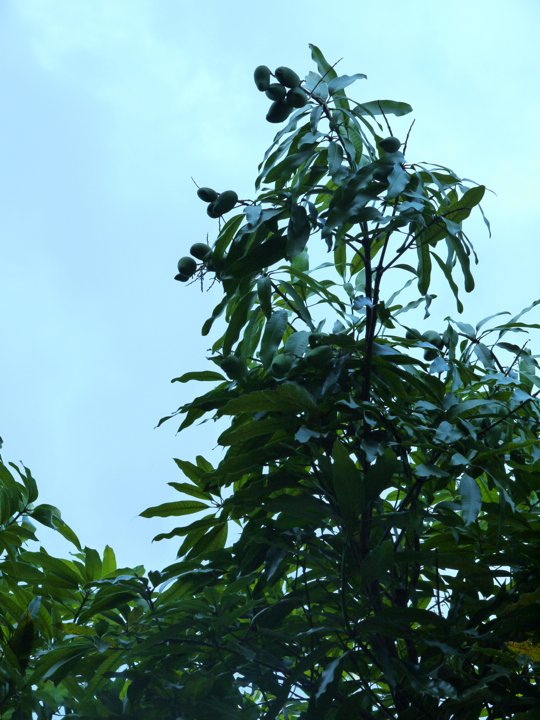
And yes, you can make chutneys and tasty dishes even out of the mango drops if you get them while they are fresh day by day.
Lychees are about the same.
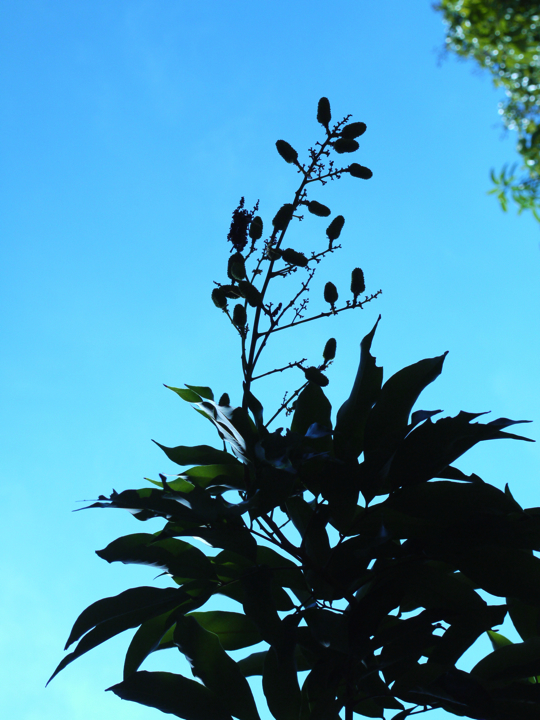
The flowering structure is almost identical between Mangoes and Lychees. Flowers of both sexes appear on the inflorescence, or flower spike. They are both self-pollinating via wind and insects. As the fruit gains weight, the clusters of fruit hang down in racimes as if the trees are bowing in service and humility.
Some other curiosities.
A very different kettle of fish, the Jakfruit is an interesting and productive fruit. The dry weather also serves as a catalyst to force the Jak into bloom and fruit set.
Heavy, heavy, hangs overhead...
Up and up and way up.
One last curiosity
This Caimito (StarApple) had to be cut back to the stump. It will take years for these new branches to become sturdy enough to hold fruit again. But years will pass, just as sure as you're born.
And that is the South Florida Mango Report, Volume 1 Number 1.
" Is it related to Catastrophic, Anthropogenic Global Warming? " haha, that was funny ! :) so you are a landscape/plant consultant?
Well I still do occasionally help people get into growing all the incredible alternative fruit we have in South Florida. Most people come here thinking they want to grow oranges or grapefruit in their back yard but there are much better choices. So it was a hobby that became work and being retired, it is a hobby once again.
"Catastrophic, Anthropogenic Global Warming" Here I'm borrowing from super-witty James Corbett, who is so adroit at demolishing elite memes. Actually I think Tobixen is upset with me about this very issue. He doesn't work directly or indirectly in the Climate Change industry, does he?
Get a load of this:
Or this demolition of the 9-11 phenom: